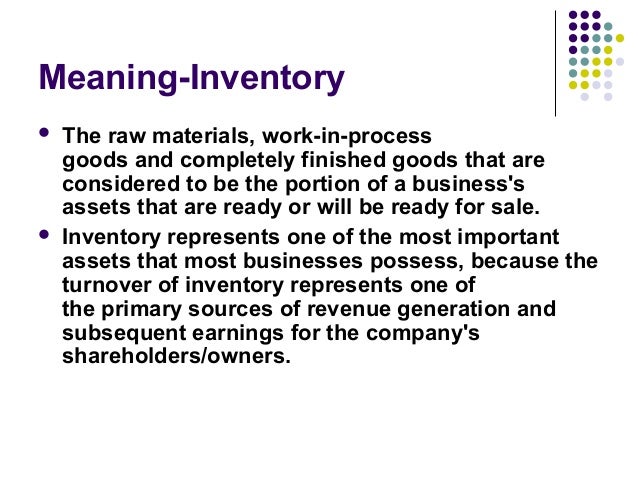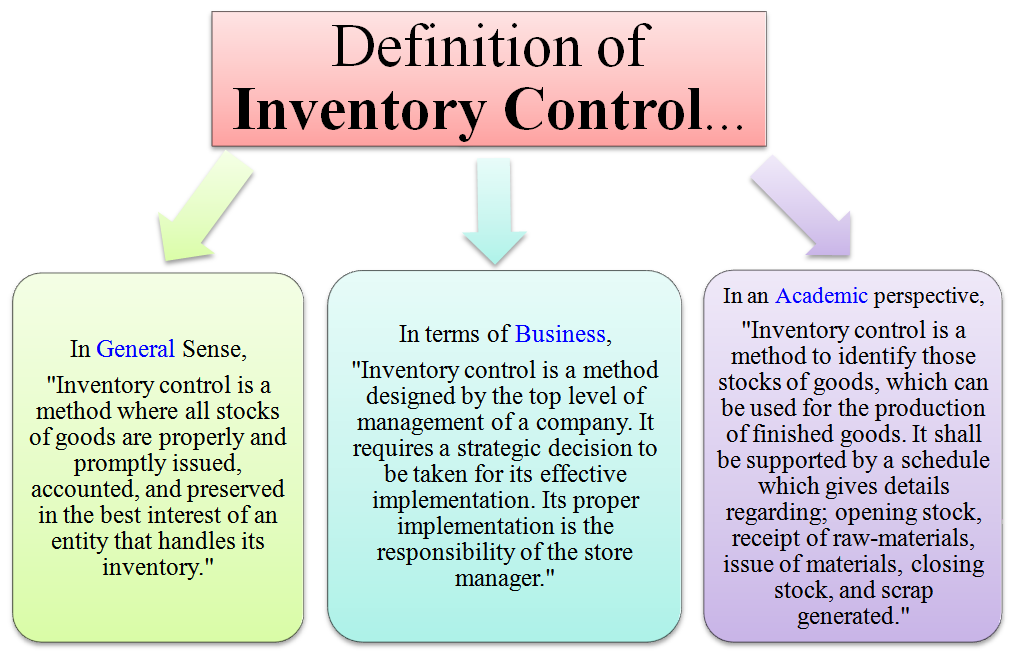

Rental or movable equipment: Makes it easier to track items moving across locations, even temporary ones for events or field operations.Furniture, fixtures, & equipment: Noting these down can be valuable in case of damage or theft.


If you have a good management solution for inventory management, it’s easier to keep track of all your available products, which saves you time in the long run.Ī good inventory system can be the difference between a successful company and an unsuccessful one. Being able to predict what will happen means you can plan better.ĭecreasing the time for carrying out an inventory count
#Inventory definition software
Software can be used to analyze data trends from well-performing stocks.

You can ship to customers when and where they want their delivery. You know when to expect deliveries so you don’t end up keeping customers waiting if you realize you’re out of a particular item. You can work out which stock is doing well and which products aren’t worth ordering or selling anymore if they’re just gathering dust. Here are five main aims of an inventory count:Īn organized system enables you to get an overview of your sales channels and keep on top of how much stock you have and where it is, if you have multiple warehouse locations. It is not uncommon for the actual inventory to not correspond to the book balances. It also determines whether the inventory you thought you had, is correct.
#Inventory definition how to
Taking an inventory count enables a company to know exactly what stock and assets it has, and how to locate these quickly. Traders and entrepreneurs should regularly determine what is in their warehouses with the help of a merchandise management system. The purpose of this procedure is to determine the actual inventory. All a company’s assets (and all its debts) should be written down in list form. By carrying out the annual inventory count, you can determine both your assets and your debts.
#Inventory definition verification
The inventory count or stocktaking procedure refers to the physical verification of the quantities in an inventory or warehouse, and what kind of condition they’re in.


 0 kommentar(er)
0 kommentar(er)
